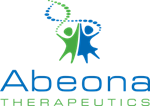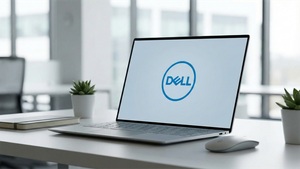- RDEB is a lifelong debilitating, blistering skin disease associated with large and painful wounds that often remain open for years and cause significant clinical burden, including pain, itch, and risk of squamous cell carcinoma -
- ZEVASKYN™ (prademagene zamikeracel) demonstrated significant wound healing and pain reduction after a single treatment with a favorable safety profile in large chronic RDEB wounds -
- ZEVASKYN is the first and only autologous cell-based gene therapy FDA-approved to treat RDEB wounds in adult and pediatric patients -
CLEVELAND, June 24, 2025 (GLOBE NEWSWIRE) -- Abeona Therapeutics Inc. (Nasdaq: ABEO) today announced that The Lancet has published results from the pivotal Phase 3 VIITAL study (NCT04227106) evaluating the efficacy and safety of ZEVASKYN (prademagene zamikeracel) gene-modified cellular sheets, also known as pz-cel, for the treatment of wounds in adult and pediatric patients with recessive dystrophic epidermolysis bullosa (RDEB). This article, titled, “Prademagene Zamikeracel for Recessive Dystrophic Epidermolysis Bullosa Wounds (VIITAL): A Two-Centre, Randomised, Open-Label, Intrapatient-Controlled Phase 3 Trial,” representing the primary publication of the full VIITAL study data, is now available online and will be published in a future print issue of The Lancet.
Jean Tang, M.D., Ph.D., Professor of Dermatology, Stanford University School of Medicine, Principal Investigator of the ZEVASKYN Phase 3 VIITAL study and lead author of The Lancet publication said, "People with RDEB endure incredibly fragile skin, leading to severe, painful wounds that can last for years, and lead to systemic complications impacting the length and quality of life. Our VIITAL study showed ZEVASKYN was well tolerated and significantly improved wound healing and pain in large chronic RDEB wounds after just a single treatment. We hope sharing these important findings, including our work published in The Lancet, raises awareness for RDEB and helps improve the lives of patients."
RDEB, a rare genetic blistering disorder, is characterized by severe skin wounds that cause pain and can lead to systemic complications impacting the length and quality of life. People with RDEB have a defect in both copies of the COL7A1 gene, leaving them unable to produce functioning type VII collagen, which forms anchoring fibrils necessary to secure the dermal and epidermal layers of the skin. Lack of anchoring fibrils leads to fragile skin that blisters easily, and patients can suffer from years of painful wounds and itch. RDEB patients also have high risk of developing squamous cell carcinoma (SCC). There is no cure for RDEB and ZEVASKYN is the only product approved by the U.S. Food and Drug Administration (FDA) to treat RDEB wounds with a single application.
“The publication of our VIITAL study results in The Lancet, a respected global medical journal, marks a significant achievement as our U.S. launch of ZEVASKYN is underway, with the first patient expected to be treated in the third quarter of 2025,” said Vish Seshadri, Chief Executive Officer of Abeona. “We deeply appreciate the invaluable participation of patients and their families in the VIITAL study, along with the scientific community's critical contributions to advancing effective treatment options for RDEB.”
VIITAL was an intra-patient randomized, open-label, controlled, Phase 3 study to compare the efficacy and safety of a single application of ZEVASKYN in 11 patients with RDEB, focusing on 43 pairs of their large chronic wounds. These wounds, each at least 20 cm² and open for a median duration of 5 years (ranging from 6 months to 21 years), were assessed against two co-primary endpoints at six months (week 24), comparing treated to matched untreated (control) wounds.
The VIITAL study builds on the clinical experience from the Phase 1/2a study of ZEVASKYN (NCT01263379), a single center, open label study in 38 chronic wounds across 7 patients. The Phase 1/2a study showed that a single surgical application of ZEVASKYN was associated with long-term improvement at treated sites over a median follow-up of 6.9 years (range 4 to 8 years). Long-term follow up data and quality of life data from the Phase 1/2a study were published in Orphanet Journal of Rare Diseases.
Highlights from the VIITAL study
- Both co-primary endpoints of wound healing and pain reduction were met.
- 81% of treated wounds (35/43) were healed by 50% or more from baseline as compared with 16% of control wounds (7/43) at week 24 (P<0.0001). Wound healing was assessed by investigators based on predefined criteria to score healing. Healing achieved at week 24 was confirmed at least 2 weeks later (week 26).
- Mean change in wound pain was -3.1 in treated wounds and -0.9 in control wounds from baseline to week 24 (P=0.0002). Reduction in pain assessed at the wound-level following wound dressing changes, measured by the Wong-Baker FACES scale (range: 0-10).
- At week 24, treated wounds were more likely to show 75% or more healing, with 65% of treated wounds (28/43) healed by 75% or more as compared with 7% of control wounds (3/43), complete healing, and greater reductions in itch and blistering compared to controls.
- No serious ZEVASKYN-related adverse events were observed, consistent with past clinical experience.
- No cases of SCC were reported in ZEVASKYN-treated wounds, consistent with past clinical experience.
About The Lancet
The Lancet began as an independent, international weekly general medical journal founded in 1823 by Thomas Wakley. Since its first issue (Oct 5, 1823), the journal has strived to make science widely available so that medicine can serve and transform society as well as positively impact the lives of people.
For more than two centuries, The Lancet has sought to address urgent topics in our society, initiate debate, put science into context, and influence decision makers around the world. The Lancet Group has evolved as a family of journals but retains at its core the belief that medicine must serve society, knowledge must transform society, and the best science must lead to better lives.
About ZEVASKYN™ (prademagene zamikeracel) gene-modified cellular sheets
ZEVASKYN is the first and only autologous cell sheet-based gene therapy for the treatment of wounds in adult and pediatric patients with recessive dystrophic epidermolysis bullosa (RDEB). RDEB is a severe skin disease caused by a defect in both copies of the COL7A1 gene resulting in the inability to produce functional type VII collagen. Without functional type VII collagen and anchoring fibrils, the skin is fragile and blisters easily, leading to wounds that continually open and close, or fail to heal altogether. Patients often have large open wounds that can lead to serious life-threatening complications. ZEVASKYN incorporates the functional type VII collagen-producing COL7A1 gene into a patient’s own skin cells, ex vivo, using a replication-incompetent retroviral vector to produce functional type VII collagen in treated wounds. ZEVASKYN has demonstrated clinically meaningful wound healing and pain reduction with a single surgical application. For more information, visit www.ZEVASKYN.com.
Indication
ZEVASKYNTM (prademagene zamikeracel) is an autologous cell sheet-based gene therapy indicated for the treatment of wounds in adult and pediatric patients with recessive dystrophic epidermolysis bullosa (RDEB).
Important Safety Information
- Serious allergic reactions to ZEVASKYN can occur. Patients should get medical help right away if they experience symptoms like itching, swelling, hives, difficulty breathing, runny nose, watery eyes, or nausea. In rare cases, a severe reaction called anaphylaxis may happen.
- There is a potential risk that treatment with ZEVASKYN may contribute to the development of cancer because of how the therapy works. Patients should be monitored for the rest of their lives to check for any signs of cancer.
- ZEVASKYN is made using human and animal materials. Although these materials are tested before use, the risk of passing on infections cannot be eliminated.
- The most common side effects are pain from the procedure and itching.
This is not a complete list of side effects. Patients should call their care team for medical advice about side effects. Side effects may be reported to Abeona at 1-844-888-2236 or FDA at 1-800-FDA-1088 or www.fda.gov/medwatch.
See full Prescribing Information.
About Abeona Therapeutics
Abeona Therapeutics Inc. is a commercial-stage biopharmaceutical company developing cell and gene therapies for serious diseases. Abeona’s ZEVASKYN™ (prademagene zamikeracel) is the first and only autologous cell-based gene therapy for the treatment of wounds in adults and pediatric patients with recessive dystrophic epidermolysis bullosa (RDEB). The Company’s fully integrated cGMP cell and gene therapy manufacturing facility in Cleveland, Ohio serves as the manufacturing site for ZEVASKYN commercial production. The Company’s development portfolio features adeno-associated virus (AAV)-based gene therapies for ophthalmic diseases with high unmet medical need. Abeona’s novel, next-generation AAV capsids are being evaluated to improve tropism profiles for a variety of devastating diseases. For more information, visit www.abeonatherapeutics.com.
ZEVASKYN™, Abeona Assist™, Abeona Therapeutics®, and their related logos are trademarks of Abeona Therapeutics Inc.
Forward-Looking Statements
This press release contains certain statements that are forward-looking within the meaning of Section 27A of the Securities Act of 1933, as amended, and Section 21E of the Securities Exchange Act of 1934, as amended, and that involve risks and uncertainties. We have attempted to identify forward-looking statements by such terminology as “may,” “will,” “believe,” “anticipate,” “expect,” “intend,” “potential,” and similar words and expressions (as well as other words or expressions referencing future events, conditions or circumstances), which constitute and are intended to identify forward-looking statements. Actual results may differ materially from those indicated by such forward-looking statements as a result of various important factors, numerous risks and uncertainties, including but not limited to, our ability to commercialize ZEVASKYN, the therapeutic potential of ZEVASKYN, whether the unmet need and market opportunity for ZEVASKYN are consistent with the Company’s expectations, continued interest in our rare disease portfolio; our ability to enroll patients in clinical trials; the outcome of future meetings with and inspections from the FDA or other regulatory agencies, including those relating to preclinical programs; the ability to achieve or obtain necessary regulatory approvals; the impact of any changes in the financial markets and global economic conditions; risks associated with data analysis and reporting; and other risks disclosed in the Company’s most recent Annual Report on Form 10-K and subsequent periodic reports filed with the Securities and Exchange Commission. The Company undertakes no obligation to revise the forward-looking statements or to update them to reflect events or circumstances occurring after the date of this press release, whether as a result of new information, future developments or otherwise, except as required by the federal securities laws.
Investor and Media Contact:
Greg Gin
VP, Investor Relations and Corporate Communications
Abeona Therapeutics

ir@abeonatherapeutics.com








